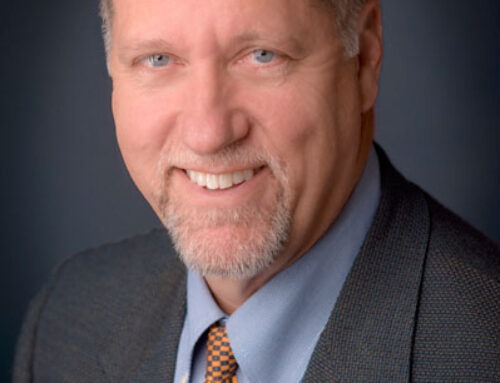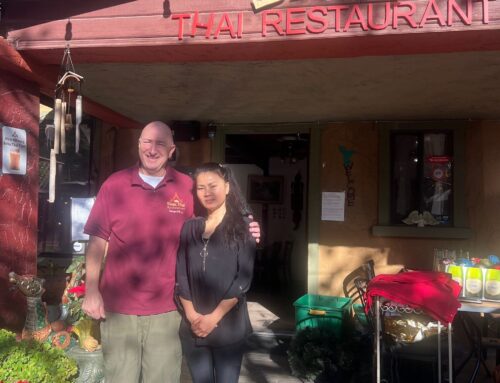National Night Out invites local families to meet first responders at sunset event
![]()

Photo by Marty Cheek
A family takes a picture with Morgan Hill police officer Katrina Olson during the Aug. 3 National Night Out.
By Marty Cheek
Families and other members of the community gathered for a few hours in downtown Morgan Hill the evening of Aug. 3 to join first responders and celebrate public safety at National Night Out.
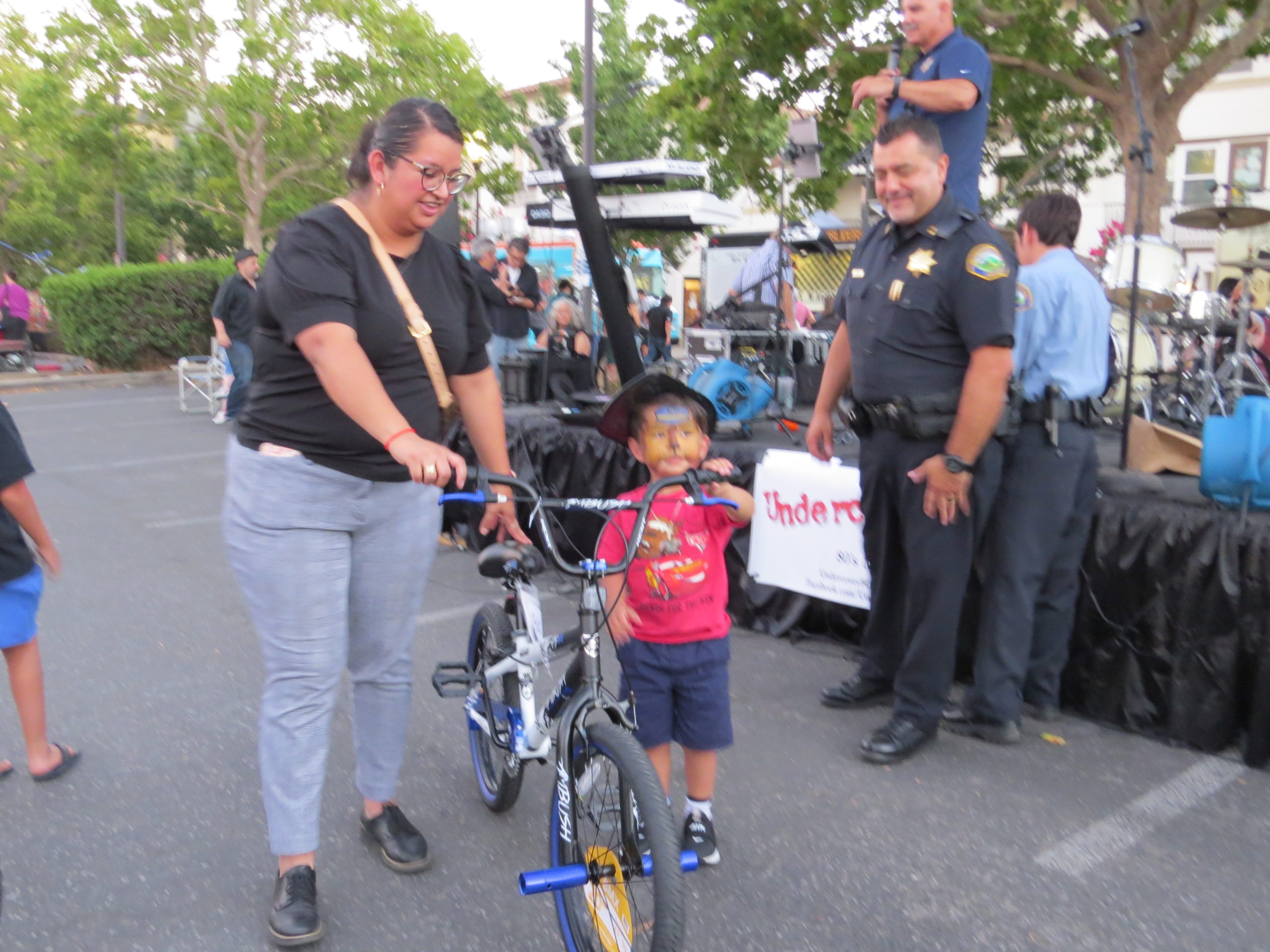 The annual event is part of the community policing philosophy and intends to increase awareness in small towns and big cities throughout the United States about police programs to encourage a spirit of partnerships with residents and thus increase public safety and reduce crime in the city.
The annual event is part of the community policing philosophy and intends to increase awareness in small towns and big cities throughout the United States about police programs to encourage a spirit of partnerships with residents and thus increase public safety and reduce crime in the city.
“It’s important for the police and the community to get together and build relationships,” said Morgan Hill Police Chief Shane Palsgrove. “It’s part of community policing where we get to know each other and work with each other to solve problems as a community so we can all enjoy a safe community.”
Hundreds of people attended this year’s event that took place between 5:30 and 8:30 p.m. at the Depot Street CalTrain Station parking lot.
“We are living in a very supportive community and we usually get a very good turnout on National Night Out,” Palsgrove said. “Attendance is probably a little more than we’ve had in previous years, possibly because people have been cooped up with COVID and so are coming out.”
Many families with youngsters enjoyed close-up inspections of the police department’s various vehicles including the SWAT truck, an antique police car, and the recreational vehicle-like police command center. Parents took pictures of their toddlers sitting on the seats of patrol motorcycles. Many of the attendees also got to know Bosco, the K-9 unit’s police dog. Cops gave kids ice cream treats to enjoy.
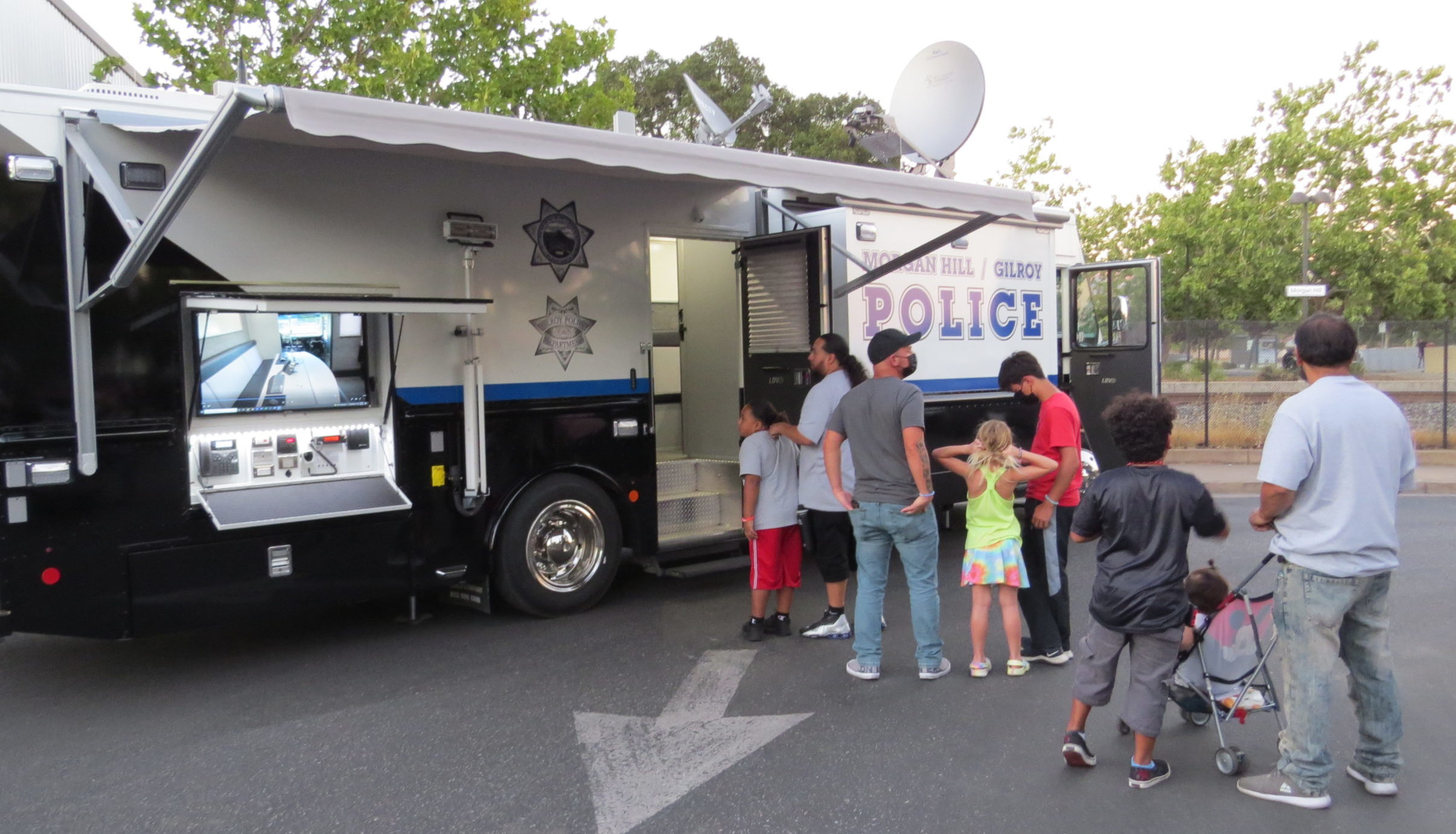
Photo by Marty Cheek Families line up to check out the Morgan Hill Police Department’s mobile command center during the Aug. 3 National Night Out.
Among the families attending was Hannah Johnson and her four young daughters. The girls were excited to get small gifts from the Community Law Enforcement Foundation booth. CLEF is a local nonprofit promoting public safety through partnerships that provide resources to help the MHPD perform at a high level of service to the community.
“We’re new to Morgan Hill. It’s a great place,” Johnson said. “We used to live in Gilroy and we went to their National Night Out there, and so we just came up here to see some friends and check it out.”
 Attendees enjoyed the music of the band Undercover. Children challenged themselves by scaling a rock-climbing wall or yelled in delight as they slid down a bouncy slide. On Depot Street, several food trucks fed people who wanted to sample various ethnic cuisines. Many attendees visited the pop-up booths that offered services to improve the quality of life for residents.
Attendees enjoyed the music of the band Undercover. Children challenged themselves by scaling a rock-climbing wall or yelled in delight as they slid down a bouncy slide. On Depot Street, several food trucks fed people who wanted to sample various ethnic cuisines. Many attendees visited the pop-up booths that offered services to improve the quality of life for residents.
Among the more popular items offered by the CLEF organizers were free fingerprint kits. They were given to parents attending National Night Out, said CLEF Board President Brian Sullivan.
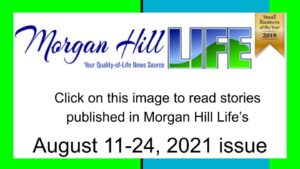 “What it does is help parents if their child ever wanders away,” he said. “All this information, the faster you get it to the police the better. So families can keep (the kit) at home so if the child ever happens to get lost, the police can use the kit to identify the child when found.”
“What it does is help parents if their child ever wanders away,” he said. “All this information, the faster you get it to the police the better. So families can keep (the kit) at home so if the child ever happens to get lost, the police can use the kit to identify the child when found.”
National Night Out is a positive way for the police and firefighters to connect with the community, he said.
“The police love to get out. They love to meet people, especially the children,” he said. “We want to make sure the children understand the police are there to help them. The police are here to support the community.”
Promoting public safety through the event helps young people to understand the men and women who work in law enforcement to protect them from crimes or other safety issues, said CLEF board member Majid Bahriny.
“This is a way for children to feel comfortable around the police and the police department.”
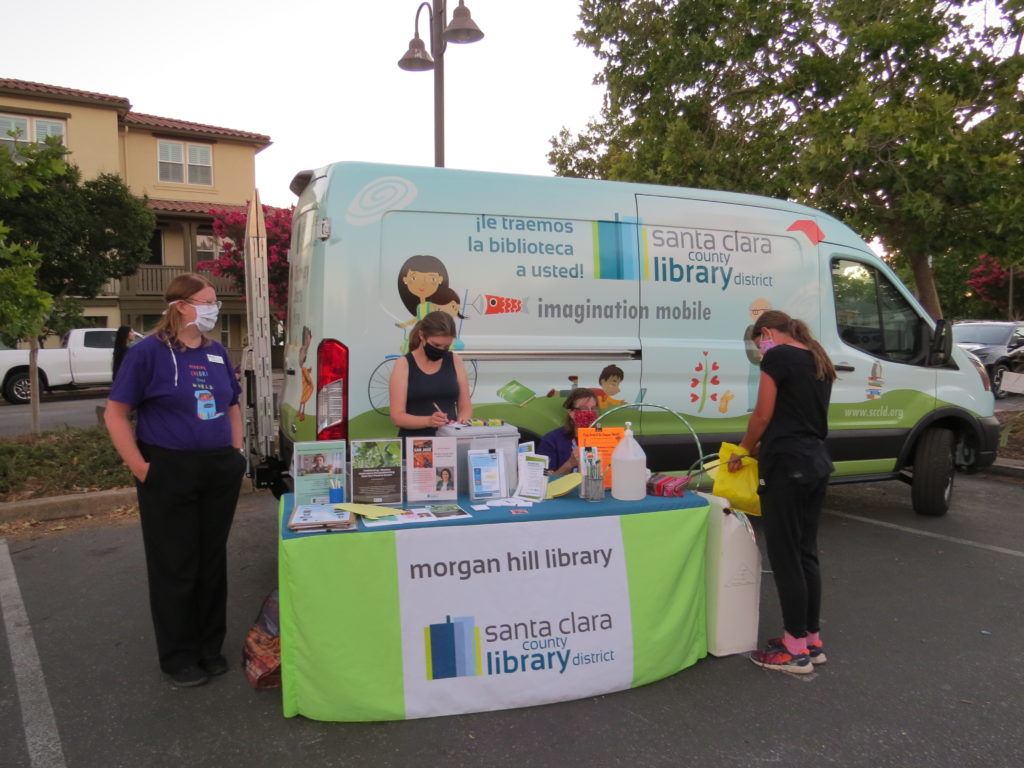 The Morgan Hill Library met with families at its county bookmobile to enjoy fun games such as Hula Hoops and chat with librarians about services. Many spent a few minutes registering for library cards.
The Morgan Hill Library met with families at its county bookmobile to enjoy fun games such as Hula Hoops and chat with librarians about services. Many spent a few minutes registering for library cards.
“We do National Night Out because it’s a great opportunity to get out into the community and meet the residents,” said Heather Geddes, community librarian.
“We want to promote the idea that people should come into the library and explore what we have,” she said. “It’s amazing to see the families come out and connect with all the community resources. Our community has so much to offer and there are so many resources to get help.”
The library is now open after being closed by COVID-19. Safety protocols are in place for visitors, she said. Children’s story times are being done online because young people under 12 cannot yet be vaccinated.
National Night Out serves as community-building campaign that promotes police-community partnerships and neighborhood camaraderie to make neighborhoods safer and make Morgan Hill a more caring places to live, said Edith Ramirez, assistant city manager.
Many times residents interact with the police when there is a crime or a stressful problem, so the annual event provides an opportunity to bring police and neighbors together under positive circumstances.
“It’s about creating a space where community and city staff, the people who are working the frontlines, our partners in blue, can be in one place for the community,” Ramirez said. “It’s exciting for the community to know personally the people who put their lives at risk every day for us and make a connection and know their faces and their names and have that relationship.”
 Families with young boys and girls are especially encouraged to attend because their children can see and engage with men and women who work the frontlines in an environment that’s friendly, she said. “They can have a conversation with them and see them as the role models that they are,” she said. “And maybe they might be inspired to take that profession on.”
Families with young boys and girls are especially encouraged to attend because their children can see and engage with men and women who work the frontlines in an environment that’s friendly, she said. “They can have a conversation with them and see them as the role models that they are,” she said. “And maybe they might be inspired to take that profession on.”
National Night Out was started in 1984 where neighbors in cities across the United States were first encouraged to turn on their porch lights and sit outside in front of their homes. It evolved to include more interaction between residents and first responders. It is sponsored by the National Association of Town Watch. The first National Night Out involved 2.5 million residents across 400 communities in 23 states. In 2016, the event involved 38 million residents in 16,000 communities across the United States.




